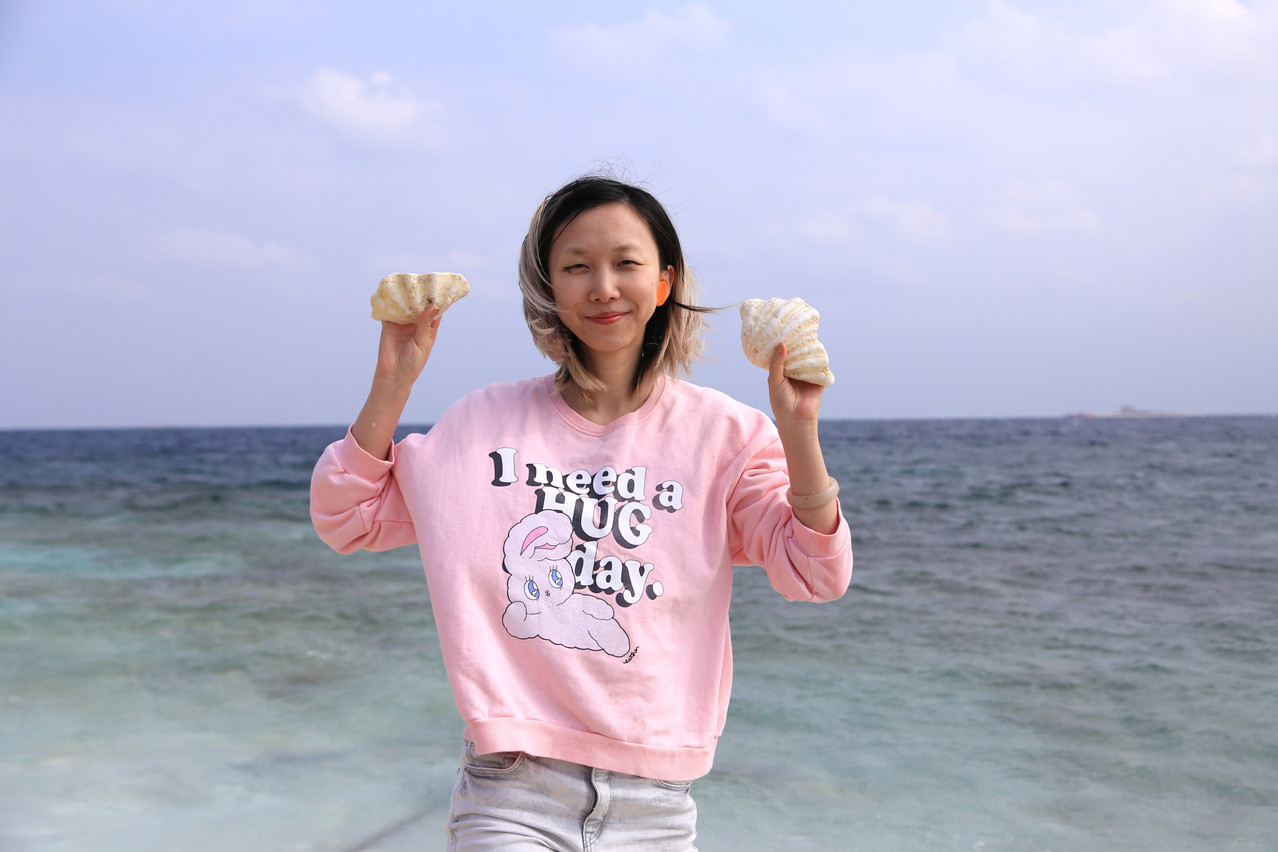The first post-pandemic will be hosted by the SnT, with speakers from NASA, OHB LuxSpace and the University of Luxembourg. The latter will be represented by Rui Zong, who has all but finished her degree at the university—only the thesis defence remains—but who has already earned a distinction of sorts: she is part of the first-ever cohort of the Interdisciplinary Space Master’s (ISM) programme.
This Space Café will address the “small satellite revolution”, which Zong explains as a trend towards smaller, lighter and cheaper satellites. “By lowering the cost, private companies or labs can get into space more easily,” she says. CubeSats (a specific class of small satellite), she goes on, use micro-rockets for their launch or can hitch a ride on bigger missions, which saves money, while their modularity and off-the-shelf components allow for faster design iterations.
How small is small? “There’s no exactly defined number,” says Zong, “but we usually say that lighter than 500kg means you’re a ‘small satellite’.”
Basically, she sums up, to make satellites you don’t need a huge factory anymore: “We have the CubeSat Lab—we can do it right here.”
Costs are falling not only for technicians and scientists, but also for end-users. earlier this year, Dr Jan Thoemel, head of the SnT’s CubeSat Laboratory, described the rising accessibility: “In the same way that smartphone technology has been gradually filtered down at a lower price point over time, CubeSats such as GOLDCREST would allow for the analysis to be shared with smaller agricultural entities who ordinarily may not be able to afford access to such technology.”
Measuring soil moisture
“GOLDCREST” is the name of the CubeSat project on which Zong and her classmates have been working, and which will be the subject of her talk on 9 December. “The mission is to design a CubeSat that can capture and measure the soil moisture of the Earth’s land surface,” she explains. Such a tool could be used, for example, to improve weather forecasting, monitor draughts and predict flooding.
As a CubeSat, the satellite is tiny. “The main outcome for us students in this mission,” Zong says, “has been putting the subsystems usually found in bigger satellites—size 3U to 6U—into a 1U size, and still achieving the same results.” For reference, the dimensions of a 6U are 10cm x 20cm x 30cm, while the CubeSat is just 10cm x 10cm x 10cm. “We accomplished this by using an agile design,” she adds.
And while the ‘small satellite’ line is, albeit informally, drawn at 500kg, GOLDCREST clocks in at a mere 1.33kg. These birdlike dimensions also help explain the name: the students chose it in honour of the goldcrest, Luxembourg’s national bird.
The satellite uses GNSS reflectometry and will do its measurements with GPS signals. (“GNSS” stands for “global navigation satellite system”.) Besides being lightweight, small and cheap, GNSS receivers are useful because they can penetrate through clouds. “They have no problems with optical conditions or cloud coverage,” Zong says.
Other observational missions do suffer from such interference, however, which is why Zong’s own thesis looks at how to remove clouds from satellite imagery using generative adversarial networks (an approach to modelling that uses machine learning).
For this CubeSat, however, clouds won’t be a problem. “It can use direct and reflecting signals,” says the almost-graduate.
The future of space
The two other Space Café speakers are, respectively, from NASA and the private sector, which draws attention to the changing dynamics of the space industry: once exclusively in the purview of governments, it is becoming increasingly privatised.
“Generally I think that’s a good thing,” Zong comments on this subject. “It will help private companies get more involved in space tasks, so that not everything depends on government agencies. It could accelerate the technology processing across the whole space industry.”
At the same time, she is wary of potential imbalances in terms of who will access (and then benefit from) resources in outer space. “My personal opinion is that we should try to cooperate, and to establish laws with more of a global consensus,” she says.
Another mounting problem that requires cooperation, she adds, is space debris: “There are more than 20,000 artificial objects in our orbit, but only about 3,300 of them are active satellites. That’s already a very critical level. If we don’t do anything, we might reach a tipping point.”
Brand new degree
The Interdisciplinary Space Master’s programme combines technical courses like spacecraft design and satellite communications with business courses like space economics and project management. “They want to develop students who will be entrepreneurs in space,” says Zong, who initially learned about the programme from a friend.
Before starting the ISM, Zong did a bachelor’s in mechanical design (as well as another master’s) at Tongji University in China. The more she learned about the grand duchy’s interest in developing its space industry, the more she thought that joining this programme would bring her good opportunities. “If they can do for space what they did for the finance sector…” she reasoned.
Having nearly finished the degree, however, she has found that internships are hard to come by. She puts that down to the pandemic, but also to the preference that some companies, especially startups, have for experts. “Sometimes ‘interdisciplinary’ means that you’re not an expert,” she says. “For me… my background is not in space. So I don’t have the experience in this industry, and usually they need that. It’s a problem.”
Not wanting to wait until the hiring situation changes, Zong has accepted an internship in her previous line of work. But she remains open to getting back into space…
